How Much Does It Cost to Develop a Mobile App?
21 Apr 21 

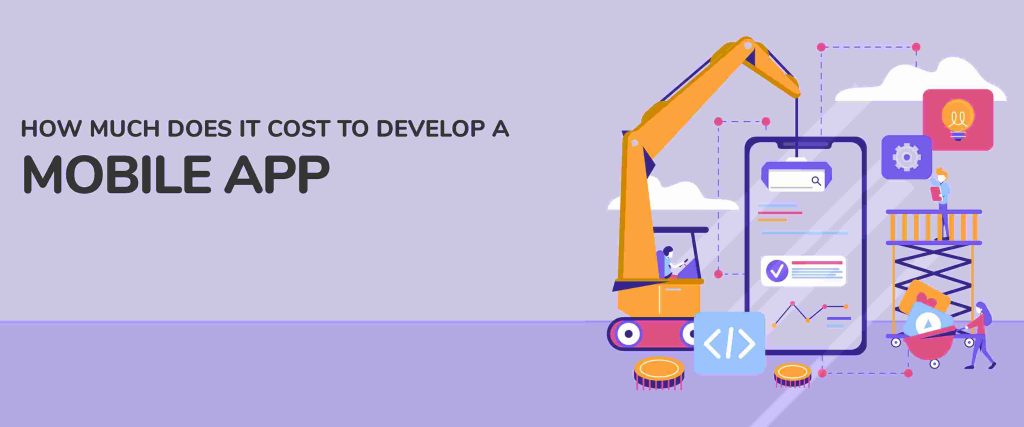
Mobile apps are taking over the digital space.
Statista analysis states that there are about 2 million apps in Apple’s app store and 2.5 million mobile applications in the Google play store.
These massive numbers prove that mobile app development is moving the whole tech industry into an entirely different realm of a digital dynasty.
A primary question that lingers around app development is ‘How much does it cost to develop an app?’. If you ask a developer, the answer would be – ‘It depends.’ And the truth is that it does! How much ever we try to get a fixed answer to that question, it is only possible to have an estimate.
In reality, each app development process is unique. And the total cost is a sum-up of several influencing factors. That being said, what we can do is narrow down the factors to certain basics and come to an estimate that is close to the actual cost.
Wondering how to do that? First things first.
Define the Type of App You are Looking to Build
Apps are of different types. The cost to develop an app varies depending on its type.
The simplest type of apps are basic functionality apps. These are built to carry out a single specific task. For example, a calculator app, alarm app, or flashlight app. Building them is super easy and can be done on a small budget, of around $1000.
As the apps become complex, the cost also increases. If you want your app to integrate payment gateways or use GPS, it will be more expensive. Not only is the development process complicated for such apps, but developers also need to consider factors like security, testing, and design. The cost can go to $10000 and above, depending on app complexity.
You should clearly identify the category of your mobile application, whether it’s a gaming app, lifestyle app, social media app, or such. And once you have defined the type of app, it’s important to stop building upon it. For example, if your goal is social media app development, don’t try to include lifestyle and games into it as well. Stick to one category to limit the expense.
Outsourcing or In-house: Identify the Development Process
Unless you can code an app by yourself, you are going to need help.
Depending on your app type, you will need to hire a mobile app developer or development team.
Here, you have two choices – outsourcing or in-house development – that hugely impact the app development cost.
Outsource app development is popular due to benefits such as reduced cost and availability of a vast resource pool. However, it does have some risks like cultural differences, language barriers, no direct contact, and lack of control over the development process.
In-house development offers better collaboration and coordination. But, it can cost more and would also require significant management efforts. Since it provides better control and transparency, it is considered as a reliable development process by most businesses.
If you know a trustworthy outsourcing team with whom you can have direct interactions, outsourcing is a good approach. In the end, the more time it takes to develop an app, the costlier it gets. Click here for more information about outsourcing mobile app development.
What are the Hourly Rates of App Developers Around the Globe
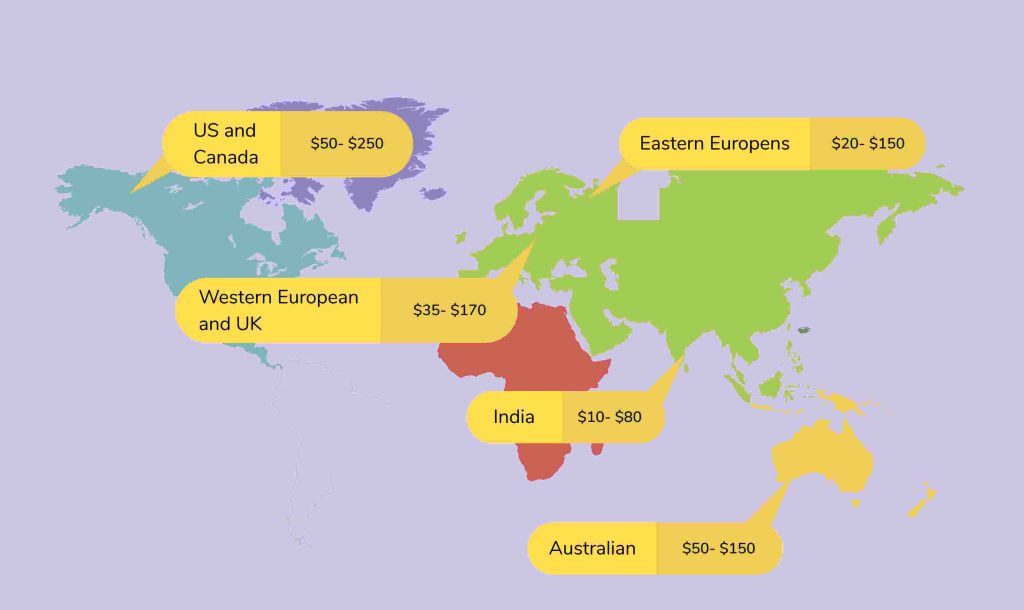
Geography plays a crucial role in determining the cost to develop a mobile app. Based on the location of developers, cost varies phenomenally. The developer’s hourly charges range from $10 to $250, depending on their location.
Let us see what are the hourly rates of mobile app developers at different locations.
- The US and Canada-based developers have the highest charges from $50 to $250 per hour.
- Developers from the UK and Western Europe charge between #35 to $170 per hour.
- In Australia, the hourly app development cost lies between $50 to $150.
- Eastern Europe-based developers charge between $20 to $150 per hour.
- India has the cheapest hourly rates ranging from $10 to $80.
On average, it would take between 300 to 600 hours to create a mobile app. So you can do a quick calculation to get an estimate about the cost of developing an app and understand how it varies across locations.
Remember that while it might be significantly cheaper to hire developers from cheaper countries, having a freelancer payment method in place that complies with local regulations is a necessary requirement.
How Much is the Cost of App Development in Different Stages
The cost to develop an app depends on the number of hours spent on the project. Time and expertise are the resources here, and so they decide the money. Another deciding element is how complex you like your app to be. The more features, the higher the cost. The basic model of an app (just the basics) will cost you about $15000, and the complex ones start from $50000.
Let’s have a look at the number of hours taken to create an app when some additional features come in.
This is how the basic timing goes when it comes to creating a mobile app. It shoots up with the increase in the number of screens, buttons, fields, and amount of logic required. Besides, if your app is more complex, it will demand bespoke coding and third-party APIs, bringing the cost up again.
Here’s a time estimate to develop an average app with seven screens.
- Wireframing – 24 Hours
- Visual Design – 32 Hours
- UX Design – 24 Hours
- Backend infrastructure and admin panel – 60+ Hours
- Third-Party APIs – 20+ Hours
- Basic controls – 10+ Hours
- Dedicated administration panel – 40+ Hours
The basic rule is adding platforms will add the cost parallelly. And deploying the app into the stores is not the end. Post-release services, like app promotion, ongoing maintenance, upgrades, and future-proofing, are also as important as the app development itself.
What Other Factors Influence the Cost to Develop an App
In the previous sections, we saw how app development cost depends on development time, location, the hourly rate of developers, and app type. These are not the only factors that influence the cost. Several other aspects also play an important role in determining the cost to develop an app. What they are– let’s take a look.
1. The Business Model of Your App
An app’s business model is fundamental in determining the cost. Which platform are you targeting, is your app free or paid, does it support in-app purchases, will it provide advertisements — all of these directly impact the cost to develop a mobile app.
2. Type of Application
Your app can either be a native app, hybrid app, or web app. It depends on factors like your desired app launch platform, required performance, budget, etc. The development process is entirely different for each type of app, and the cost will also be different.
3. Development Team
Besides developers, an app development team consists of a business analyst, solution architect, project manager, UI UX designer, and quality assurance specialist. This team can be basic or extended, depending on your project.
4. Technical Difficulties
As the features of your app increase, the technical difficulties also increase. These include third-party integration, in-app purchases, hardware purchases, comprehensive backend development, etc.
5. Custom User Interfaces
If your app requires implementing custom user interfaces, it will increase the cost. Building from scratch requires more time, effort, and skill than using standard components.
6. Post-Launch Activities
Even after releasing a mobile app, support from the development team is required for the smooth functioning of the app. The app would need customer support, backend maintenance, updates, hosting support, etc. Some development teams also provide marketing and promotion assistance.
Types of Apps And The Cost Differences
There is no limit to the mobile app ideas that the human mind can conceive. Each app idea may be different and need different processes. Now you have a basic idea about how much an app development costs and how it varies according to situations. So let’s see how different mobile applications will change the pricing.
1. Standalone App
The Standalone app can be widely defined as an app that does not require a network connection to function. These apps are not so popular today as the functions are minimal. Another advantage is that it does not precede an installation process, and it is portable. Also, it doesn’t demand an operating system’s service to run. The examples that can be stated are our age-old clock, settings, and camera in our smartphones.
2. Basic Utility App
These kinds of apps are the basics. They consume data and provide you with the information. No login or authentication, just the data checks and updates. Examples are calendar or maps or stocks which come embedded in your smartphone.
3. Login App
Next comes apps that ask for a login or authentication. Nowadays most of the app falls under this category. Entering your details will create a customized account to provide a more personalized user experience. The examples are all around now.
4. Social Networking App
Recently, Facebook purchased Whatsapp for 19 billion US Dollars. Yes! I said ‘billion.’ The most popular social networking app purchased the most engaging social networking app.
Further explanations are unnecessary to understand this type of application. The names explain it all. Another addition to this app can be dating apps like Tinder which are gaining attention from people who find it difficult to interact with people in real-time. They seek virtual reality and feel comfortable in the confines of a virtual mobile world.
5. E-Commerce App
eCommerce apps are ruling the world now. It comes with a display of products and a payment gateway. Also, it has different login options for customers and producers. The features are a lot more in these applications compared to the basics. So the cost to develop e-commerce apps is comparatively high.
6. On-Demand App
On-demand apps help users to fulfill a requirement immediately. The backend wheels should turn immediately as a customer summons an action. Uber is the best example. The ride reaches you within the minimum time once the booking is made. On-demand delivery apps require even more features and user interfaces. They are gaining traction in the digital pathway. So developing one will be a benefit.
7. Two-Sided Marketplace App
The Two-sided marketplace is an application in which there are two users, and both of them having different login platforms. Facebook and Google serve as examples. It has two separate logins for users and advertisers, and it connects them both. A two-sided marketplace app is trending today as it unites the consumer and advertiser at a common platform.
8. IoT/Hardware App
IoT apps are the future. They connect hardware to facilitate ease of interaction and usage. Just imagine how lazy people would get if speaking to your smartphone will control every gadget you want to connect with. The technology is growing and finding application in various sectors. IoT app development is a technology that promises a sound future.
The Cost to Develop an App: Hybrid vs Native App
One of the first decisions that you will have to make once you decide to build an app would be whether it is a hybrid app or a native app. This decision will have direct consequences on the cost to develop an app.
Generally, native app development is costlier than hybrid app development.
If you choose native app development, you will have to decide on your preferred platform – Android or iOS app development. And if you want to develop an app for both platforms, you will need to build two separate apps. An estimated cost to develop a native app would be $100,000.
Hybrid apps, on the other hand, allow you to develop apps for Android and iOS at the same time. It employs cross-platform app development, which uses a single codebase to develop apps for multiple platforms. The cost to develop a hybrid app ranges between $5000 to $50,000.
With efficient hybrid mobile app development frameworks like React Native and Flutter that offer exceptional performance in a limited budget, hybrid app development is gaining momentum over native app development.
What is the Cost of Hiring App Developers
If you have decided to hire a mobile app developer, you would want to know about the developer cost. It depends on factors such as the developer’s location, development platform, and skill of the developer.
We already saw how the hourly charge of developers varies across different locations. On a yearly basis, the average cost of hiring developers look like this:
- $89,000 per year for US-based developers
- $76,000 per year for Australian developers
- $66,000 for German developers
- $53,000 for UK and Canada based developers
- $4000 for Indian developers
The cost of developers will also vary depending on whether it is Android app development or iOS app development. In general, the cost to hire an Android developer is higher than that required for hiring an iOS developer. But overall, iOS app development is costlier than Android app development.
An Overview of App Maintenance Cost
Tasks like app updates, hosting, marketing, and monitoring come under app maintenance. This incurs additional costs. On average, app maintenance cost is expected to roughly amount to 15-20% of the total cost of app development.
- Hosting: Depending on the media richness of your app, the type of data your app deals with, the hosting solution you choose, and the extent of services you use, the hosting charge may vary between $20 to $1000 per month.
- Updates: Updates are necessary for every app as they encourage constant improvisation. It is a great way to integrate the latest mobile app development trends to previously released apps. The time and cost for app updates vary from app to app.
- Monitoring: App monitoring is essential for the smooth functioning of an app. It also varies from one app to another as the user base of each app may be different.
- Marketing: Marketing includes activities aimed to increase app installations and improve app engagements. It varies according to the various marketing strategies used by different agencies.
Final Thoughts
The cost to develop an app cannot be concluded to a fixed amount. We saw how various factors affect the cost. Starting from the business model, type of app, development team, location, and app marketing and updates, each of these impacts the cost of mobile app development.
App development is a diverse field. So whatever your requirement may be, it is possible to find a reliable partner for your app development journey. If you have a limited budget, you need not refrain from pursuing your app development dream. Outsource app development or hybrid app development might meet your needs. So talk to experts and change your dream into action.
As the world is going online, adapting to the changes is not just a choice but a necessity. Being obsolete is out of the question. So approach a mobile app development company now and share your ideas with them to upscale your business and witness the benefits the growing tech world has to offer you. Don’t just be a witness to the change, be a part of it.
At Mindster, we create flawless mobile app designs and lasting impressions through unwavering dedication to the projects we endure. We offer reliable mobile app development services and have a set of applications to our credit which includes Grocery applications, Taxi dispatch app, ecommerce apps, and many more.
Mindster creates flawless mobile app designs and lasting impressions through unwavering dedication to the projects we endure. We have a set of applications to our credit which includes Grocery applications, Taxi dispatch software, and many more.
- Agentic AI1
- Android Development3
- Artificial Intelligence31
- Classified App3
- Custom App Development5
- Digital Transformation12
- Doctor Appointment Booking App14
- Dropshipping1
- Ecommerce Apps40
- Education Apps2
- Fintech-Apps37
- Fitness App4
- Flutter4
- Flutter Apps20
- Food Delivery App5
- Grocery App Development1
- Grocery Apps3
- Health Care10
- IoT2
- Loyalty Programs9
- Matrimony Apps1
- Microsoft1
- Mobile App Maintenance2
- Mobile Apps127
- Product Engineering6
- Progressive Web Apps1
- React Native Apps2
- Saas Application2
- Shopify9
- Software Development3
- Taxi Booking Apps7
- Truck Booking App5
- UI UX Design8
- Uncategorized6
- Web App Development1








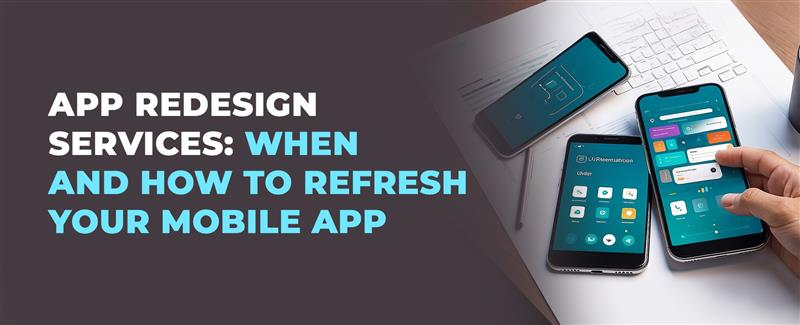
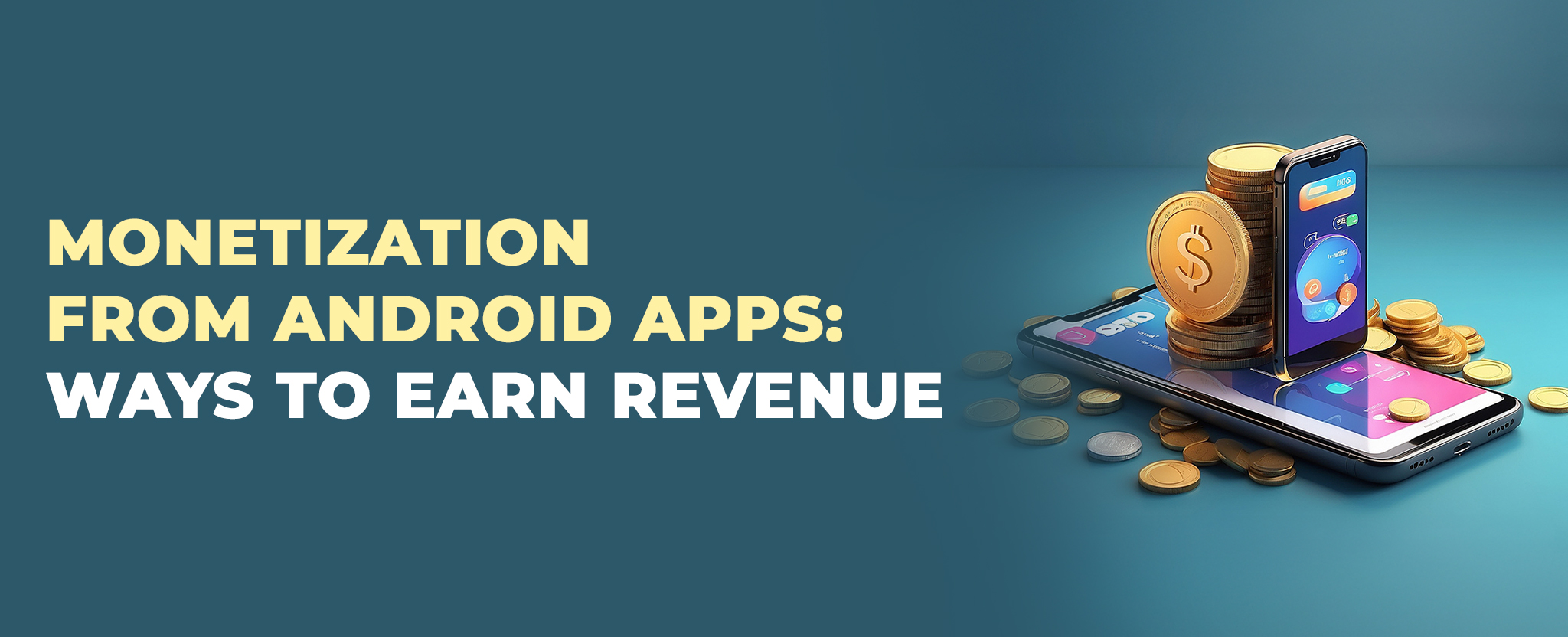
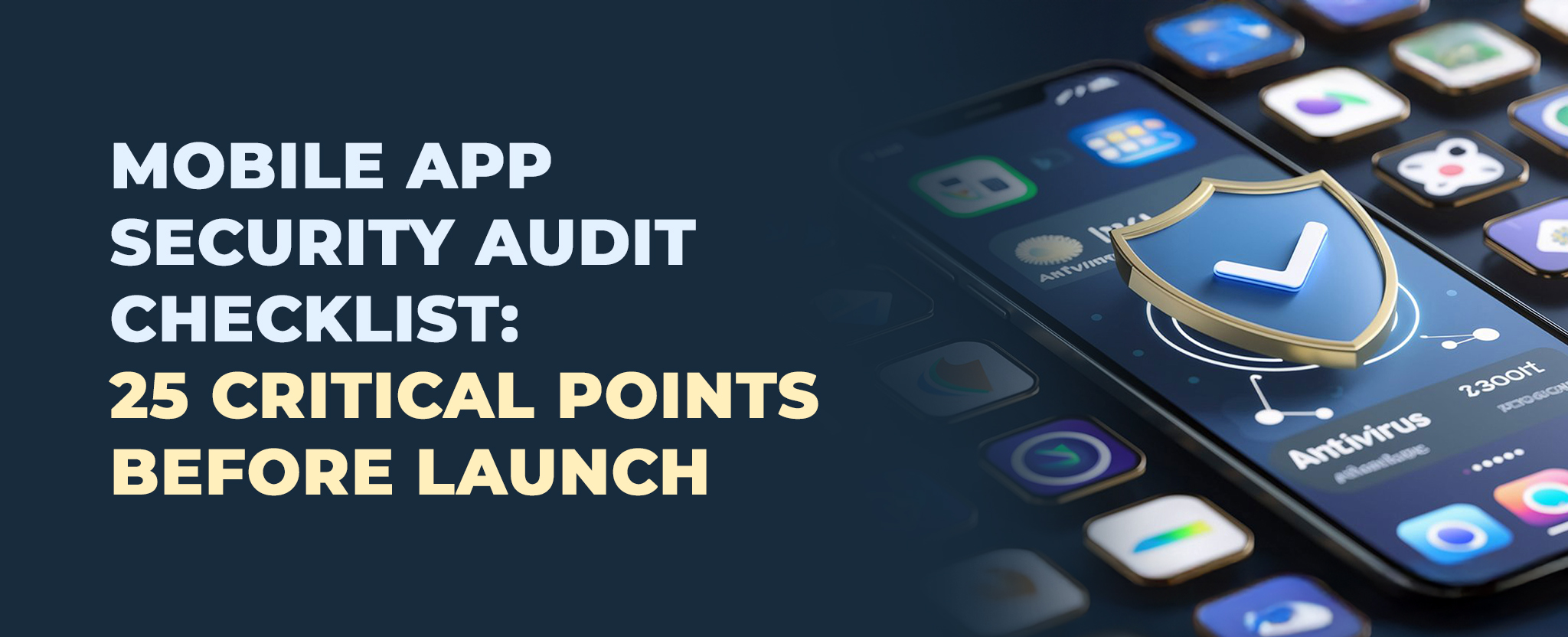
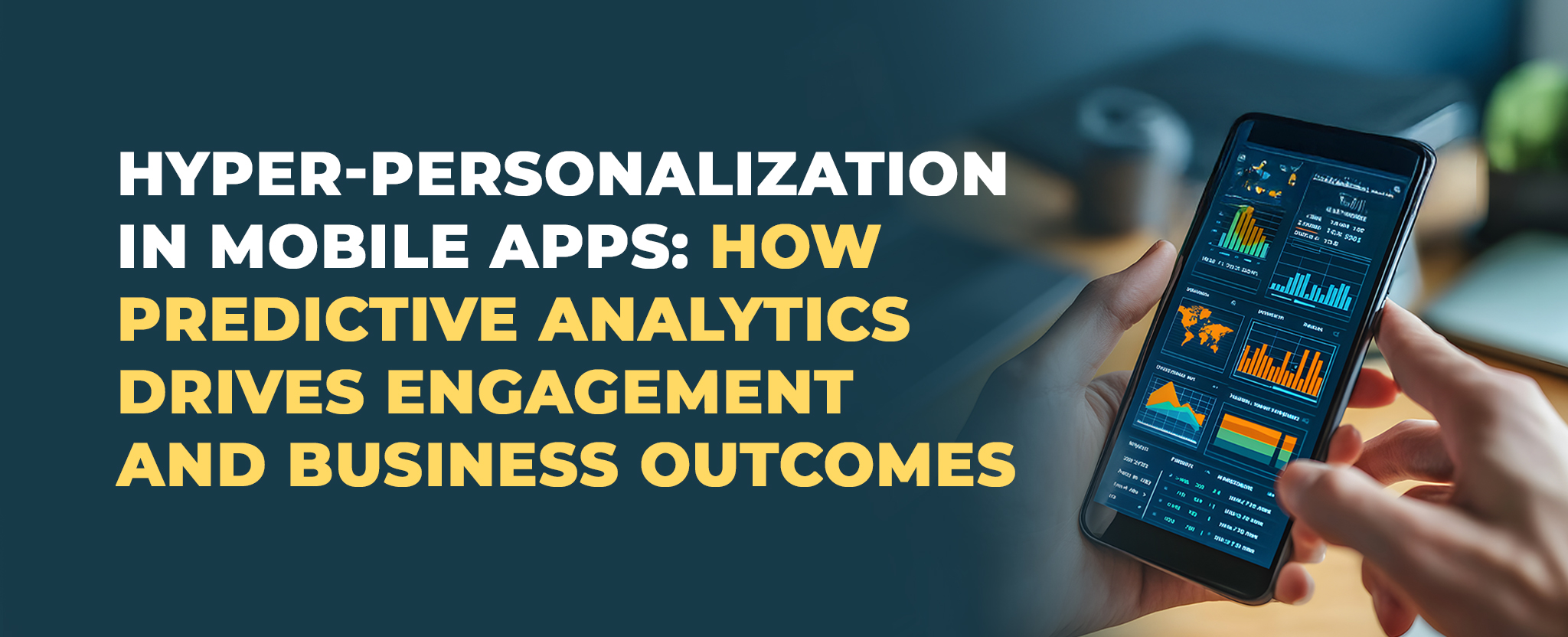






Comments